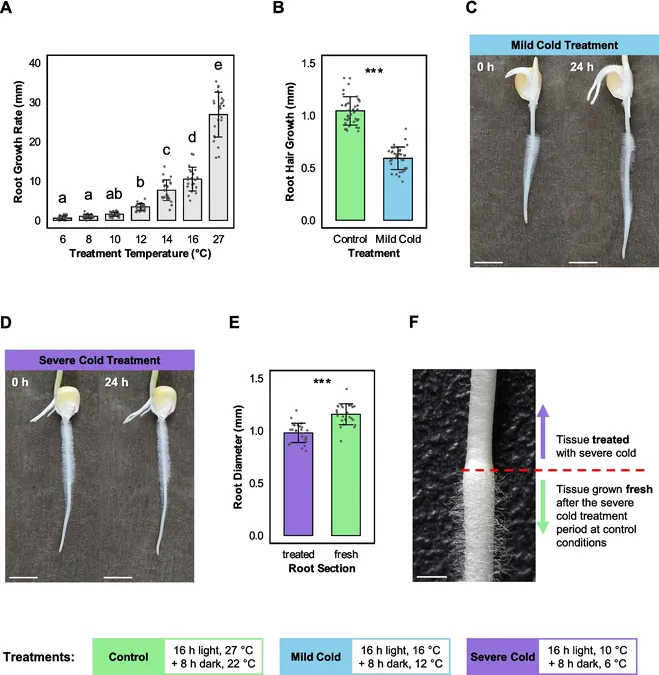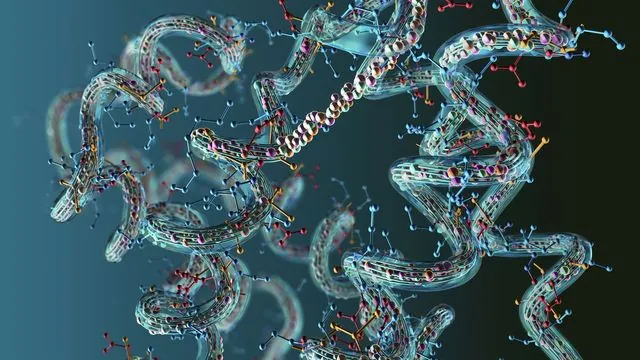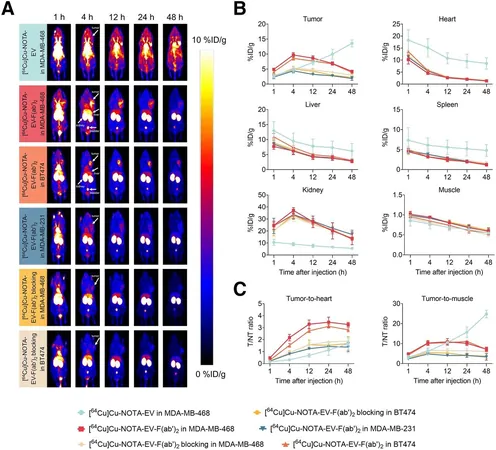
Unraveling the Secrets of Maize Root Hairs: How Cold Stress Shapes Their Growth
2025-09-22
Author: Siti
The Ancient Crop Facing a Modern Challenge
Maize, a staple crop domesticated in Central America around 10,000 years ago, spans a wide range of climates, making it a crucial resource for food, feed, and industrial applications. However, in temperate regions like Central and Northern Europe, these crops face unpredictable cold stress during critical growth stages, leading to significant impacts on yield.
Cold Stress: A Growing Concern
Defined as temperatures dropping below the optimal 21-27°C, cold stress can delay seedling emergence and reduce plant vigor, risking yield losses. As climate change intensifies the frequency of extreme weather, ensuring robust cold tolerance in maize has become more urgent than ever.
Root Hairs and Their Role in Cold Adaptation
Root hairs, the delicate extensions of maize’s epidermal cells, enhance nutrient and water uptake, acting as anchors in fluctuating temperatures. Understanding their response to cold stress is vital for developing better cultivars resilient to climate extremes.
A Unique Molecular Response to Cold
Maize undergoes a complex interplay of metabolic changes and gene expression adaptation when faced with cold temperatures. The INDUCER OF CBF EXPRESSION (ICE) signaling pathway is pivotal, regulating genes that are critical for stress response and cell-wall organization.
The Impact of Reactive Oxygen Species
Cold stress often leads to overproduction of reactive oxygen species (ROS), which can severely damage cellular components. While some ROS levels are beneficial for signaling growth and adaptation, excessive amounts can inhibit root hair elongation.
Researching Cold's Effects on Root Hair Performance
Recent studies have explored how varying intensities of cold stress affect maize, particularly focusing on the B73 inbred line. By comparing mild (16°C) and severe (10°C) cold treatments, researchers aim to describe the transcriptomic and phenotypic shifts in root hairs.
Methodologies Behind the Pursuit
Seeds were cultivated under controlled conditions, with precise measurements taken before and after various treatment durations. The meticulous approach allows for capturing the nuanced growth responses that cold stress incites.
Dramatic Genetic Shifts Under Cold Stress
Experiments reveal that mild and severe cold affect gene expression significantly, with severe conditions leading to broader and more detrimental effects. A staggering number of genes associated with root growth and development were either upregulated or downregulated, pointing to the complexity of atrial adaptation mechanisms.
The Role of Hormone Pathways
Hormonal signals play a vital role in how maize perceives and reacts to cold. Key pathways involving cytokinins, auxins, and jasmonates were affected differently during mild and severe cold exposure, illustrating how hormonal balance is crucial for root hair development.
Toward Cold-Resilient Maize Varieties
This research underlines the specific responses of maize root hairs to different cold severities—a crucial factor in breeding programs aimed at enhancing cold tolerance. As global temperatures fluctuate, understanding these dynamic adaptations will be essential in safeguarding maize production.
Conclusion: Adapting Agriculture to Climate Change
The findings suggest that morphological and transcriptomic adaptations in maize underline the potential for engineered resilience against cold stress. As researchers continue to decode the complexities of these responses, the agricultural community may one day harness this knowledge to breed stronger, more resilient maize varieties, securing food sources amid a changing climate.




 Brasil (PT)
Brasil (PT)
 Canada (EN)
Canada (EN)
 Chile (ES)
Chile (ES)
 Česko (CS)
Česko (CS)
 대한민국 (KO)
대한민국 (KO)
 España (ES)
España (ES)
 France (FR)
France (FR)
 Hong Kong (EN)
Hong Kong (EN)
 Italia (IT)
Italia (IT)
 日本 (JA)
日本 (JA)
 Magyarország (HU)
Magyarország (HU)
 Norge (NO)
Norge (NO)
 Polska (PL)
Polska (PL)
 Schweiz (DE)
Schweiz (DE)
 Singapore (EN)
Singapore (EN)
 Sverige (SV)
Sverige (SV)
 Suomi (FI)
Suomi (FI)
 Türkiye (TR)
Türkiye (TR)
 الإمارات العربية المتحدة (AR)
الإمارات العربية المتحدة (AR)